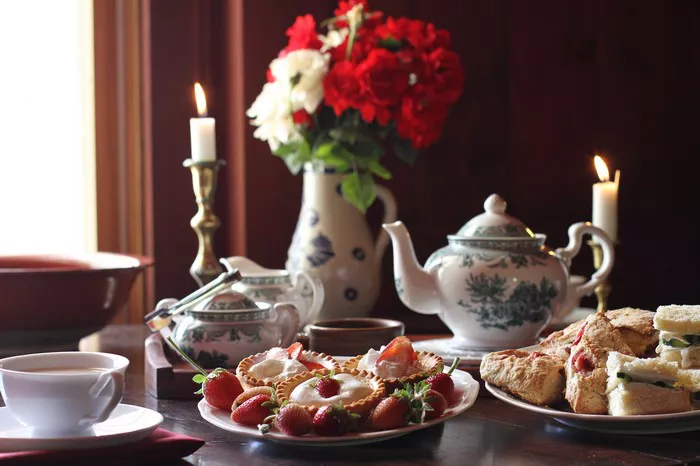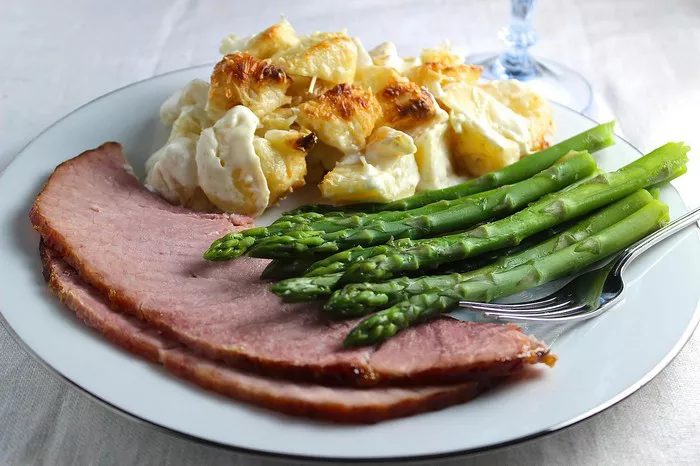In the world of culinary indulgence, desserts hold a special place. Beyond satisfying our taste buds, desserts are often synonymous with celebration, joy, and sensory delight. In an era where presentation matters as much as taste, the art of making desserts attractive has become an essential skill for chefs, home bakers, and food enthusiasts alike. This article dives into the creative realm of dessert presentation, unveiling the secrets to crafting desserts that are not only delectable but visually captivating.
The Power of Visual Appeal
In the culinary world, we eat with our eyes first. The presentation of a dish can influence our perception of its taste, texture, and overall quality. When it comes to desserts, the visual allure plays an even more significant role. A beautifully presented dessert can elevate the entire dining experience, making it memorable and enhancing the anticipation of indulgence.
The Balance Between Taste and Aesthetics
Creating visually appealing desserts does not mean compromising on taste. The objective is to strike a harmonious balance between aesthetics and flavor. A dessert should be a multisensory experience that delights the eyes as much as the palate. The challenge lies in merging artistic creativity with the science of flavor to create an unforgettable dessert journey.
The Artistic Canvas: Plating Techniques
Plating is the art of arranging food on a plate, transforming it into a masterpiece. The same principles apply to dessert presentation. The choice of plate, arrangement of components, and strategic use of colors and textures contribute to the overall visual impact.
Minimalism: Less can often be more. A minimalist approach involves using negative space to highlight the dessert’s key elements. A single, beautifully crafted dessert placed elegantly on a clean, uncluttered plate can have a striking effect.
Layering: Create depth and dimension by layering components. Place contrasting textures and flavors in different layers to surprise and engage the senses.
Artful Drizzling: Use sauces, coulis, or chocolate ganache to create artful drizzles on the plate. The fluid lines add movement and visual interest.
Stacking and Asymmetry: Embrace asymmetry and varying heights to add dynamic energy to the presentation. Stacking dessert elements or tilting components can create a sense of drama.
Color Palette: Painting with Edible Hues
Colors evoke emotions and set the tone for a culinary experience. When crafting visually appealing desserts, consider the color palette carefully.
Monochromatic Elegance: Working within a single color family can create a sophisticated and cohesive look. Experiment with different shades of the same color to add depth.
Contrast and Complement: Contrast bold, vibrant hues with neutral backgrounds to make the colors pop. Complementary colors, those opposite each other on the color wheel, can create a visually stunning effect.
Natural and Vibrant: Incorporate natural colors from fresh fruits, herbs, and edible flowers. Their vibrant hues not only enhance the presentation but also add a touch of freshness.
Texture Play: Balancing Crisp and Creamy
Texture is another dimension that contributes to the allure of desserts. A harmonious combination of textures adds complexity and intrigue to the dining experience.
Crispy and Crunchy: Incorporate elements that provide a satisfying crunch, such as toasted nuts, brittle, or delicate tuiles.
Silky and Smooth: Contrast the crunch with velvety, creamy components like mousses, custards, or silky sauces.
Play with Temperature: Introduce temperature contrast with warm and cold components. A warm dessert with a cold scoop of ice cream creates a delightful sensory contrast.
Edible Garnishes: Elevating the Presentation
Edible garnishes are like the finishing touches on a work of art. They can add a touch of elegance, whimsy, or drama to the dessert.
Microgreens and Herbs: Delicate microgreens and fresh herbs not only add a pop of color but also provide a burst of flavor and aroma.
Edible Flowers: Edible flowers like pansies, violets, or nasturtiums bring a touch of beauty and elegance to desserts. Ensure they are safe for consumption and free from pesticides.
Candied Elements: Candied citrus peel, crystallized flowers, or caramelized sugar decorations can add a touch of sweetness and visual interest.
The Role of Presentation Tools
The tools you choose for dessert presentation can significantly impact the final result. From dessert rings and molds to artistic brushes for sauce application, the right tools can turn your vision into reality.
Dessert Rings: These versatile tools help create defined shapes and layers on the plate, allowing for precise presentation.
Stencil Designs: Stencils can be used to add intricate patterns or designs with powdered sugar, cocoa, or colored sauces.
Piping Bags and Tips: Piping allows for controlled application of sauces, creams, and purees, giving you the freedom to design intricate details.
Personal Touch: Expressing Creativity
While there are guidelines for creating visually appealing desserts, it’s important to infuse your creations with your unique style and creativity.
Tell a Story: Craft desserts that tell a story or evoke a memory. Incorporate elements that resonate with the theme or inspiration behind the dessert.
Innovative Serving Vessels: Experiment with unconventional serving vessels like hollowed fruits, glass jars, or unique plating materials that add a touch of novelty.
Artistry with Sauces: Elevate your dessert with artistic sauce application. Create swirls, splatters, or even abstract designs to add a sense of whimsy.
Customized Details: Add personalized details that reflect the occasion or the person you’re serving. A hand-drawn chocolate decoration or a message written in sauce can make the dessert truly special.
Conclusion
The art of making desserts attractive is a fusion of creativity, skill, and culinary knowledge. It’s a journey that goes beyond taste and transcends into a multisensory experience. By understanding the principles of plating, color, texture, and garnishing, you can craft desserts that not only tantalize the taste buds but also leave a lasting impression on the eyes and the heart. In a world where the culinary arts are celebrated, mastering the art of dessert presentation is a skill that can elevate your creations to new heights of culinary excellence.

























